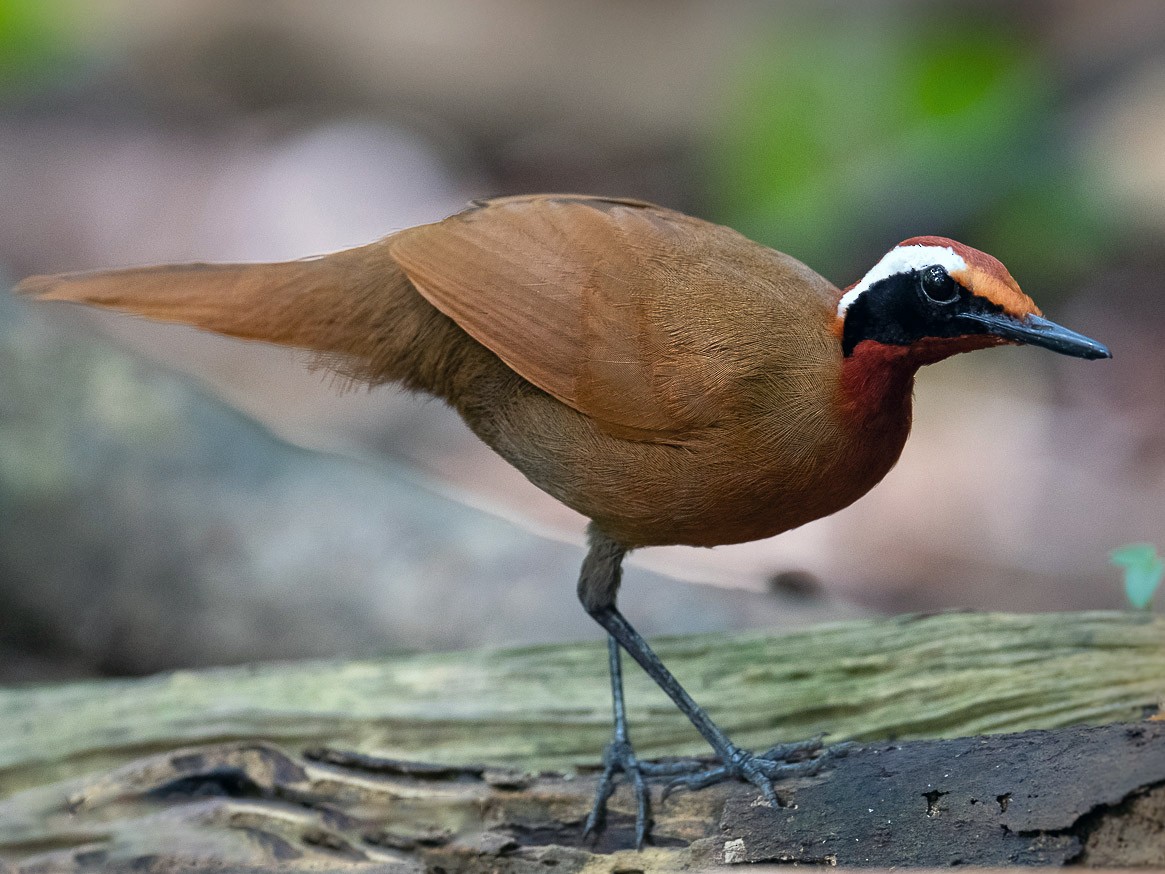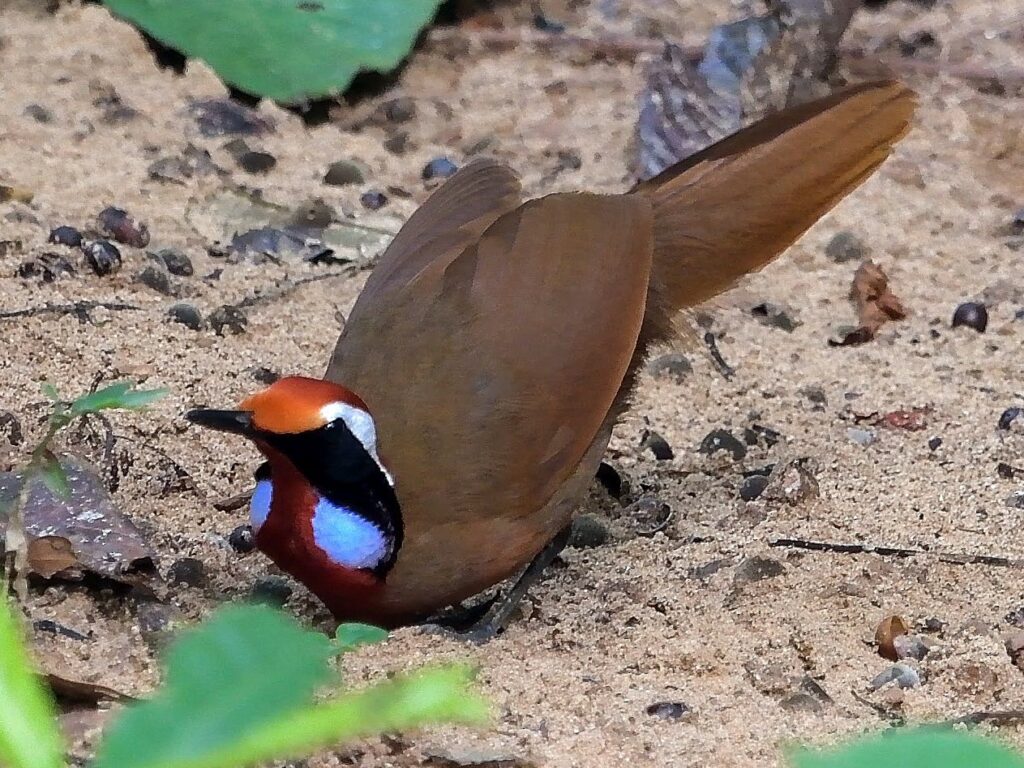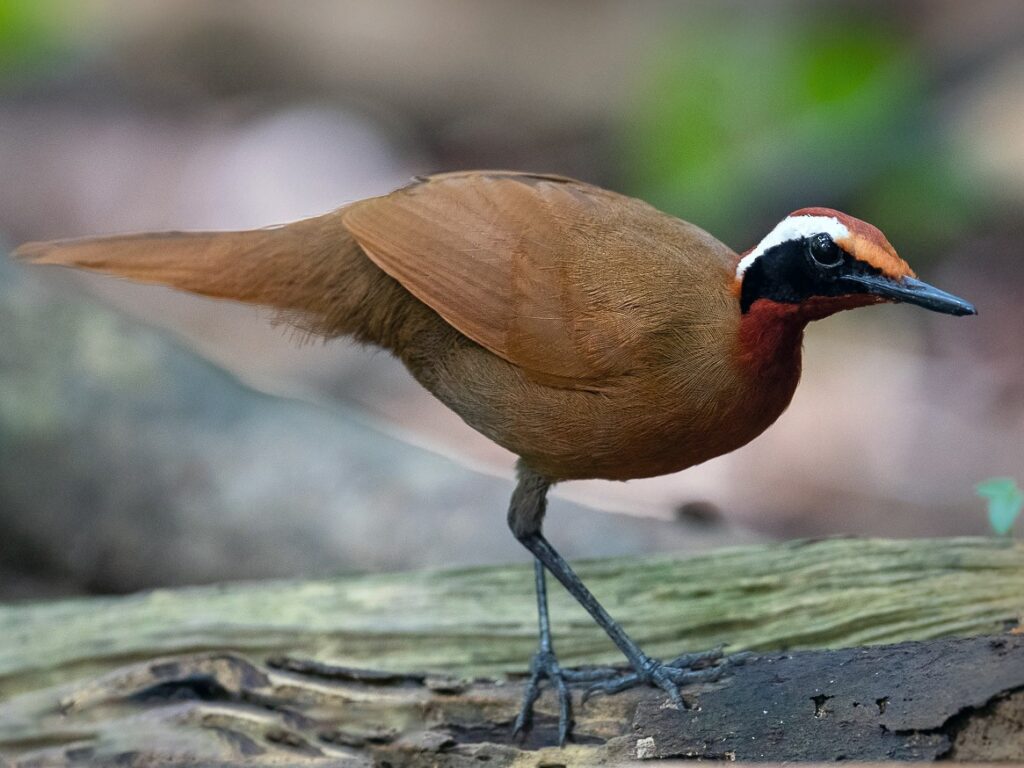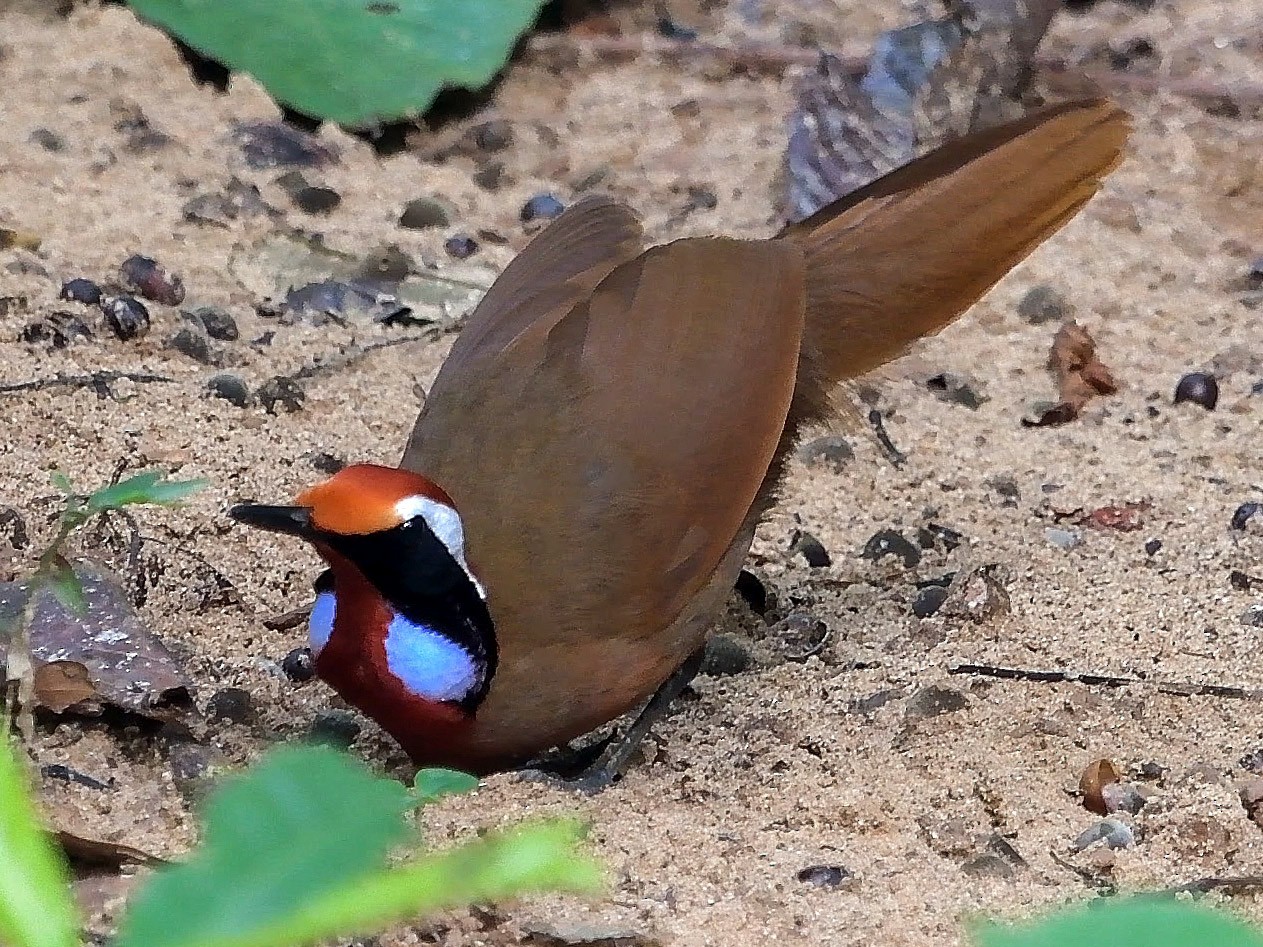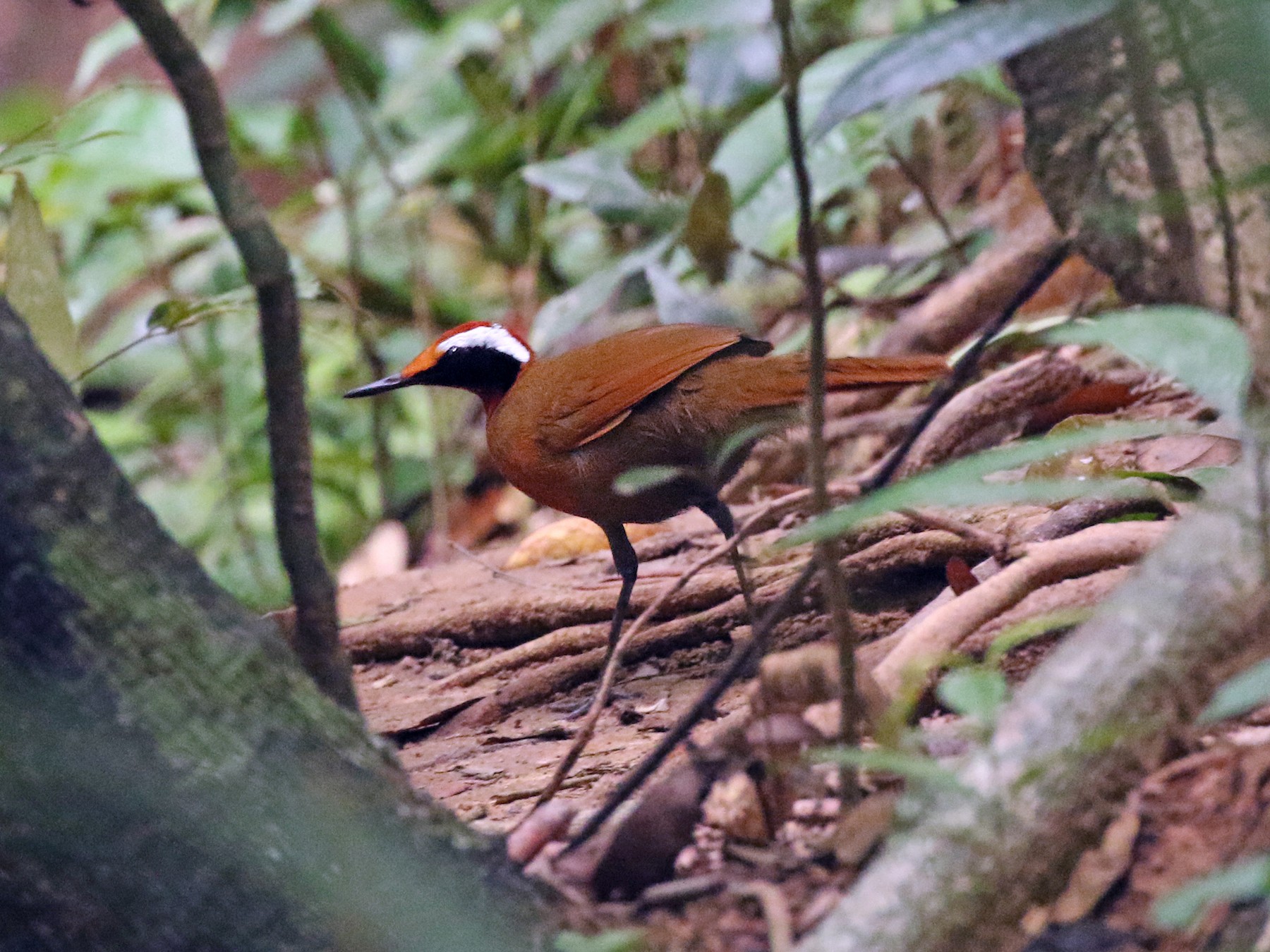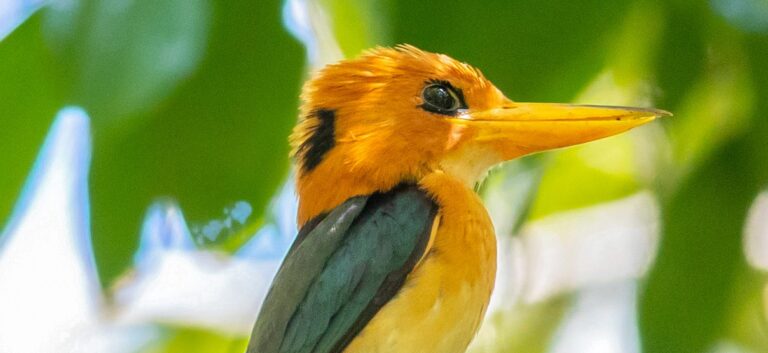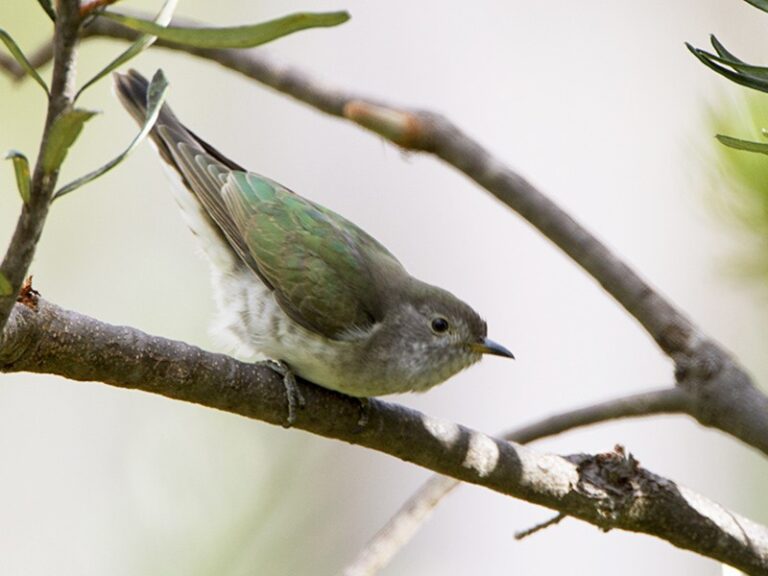Malaysian Rail-Babbler Unveiled: Secrets of a Mysterious Forest Bird
The Malaysian Rail-Babbler is a striking songbird native to Southeast Asian forests. Its wild looks and odd family ties make it a favorite among birdwatchers and scientists.
Scientific Classification
You’ll find the Malaysian Rail-Babbler listed as Eupetes macrocerus. It’s the only species in its genus, Eupetes.
Scientists once lumped it in with the babbler family (Timaliidae), but that didn’t last. New genetic research changed things up.
These days, most researchers put the Malaysian Rail-Babbler in its own family, Eupetidae. Its spot on the bird family tree has bounced around quite a bit, thanks to its unusual traits.
Older studies suggested links to quail-thrushes, whipbirds, and even logrunners. But newer molecular work points to it being truly unique.
It’s not close to true babblers or African rockfowl like picathartes. The bird sits on its own branch within the big Passerida group of songbirds.
Physical Characteristics
This bird is slim and ground-loving, measuring about 28 to 32 centimeters long. Its body is mostly brown, with a long tail and skinny legs—perfect for darting through thick undergrowth.
A black stripe runs from the bill to the back of the head, giving it a masked look. The skin on its neck flashes blue when it calls or displays, which is pretty eye-catching. The forehead shows off a rusty-red patch, and some individuals have a pale throat. Juveniles look duller and their markings are blurrier.
Adults keep their feathers neat and often hold their tails upright. The bird’s overall vibe is so different from most songbirds that it feels almost mysterious. With its walk and appearance, it reminds people of rails, though they’re not actually related.
Related Species and Family
Despite its name, the rail-babbler isn’t related to rails or babblers. Scientists used to debate its relatives, tossing around ideas like quail-thrushes, whipbirds, rockjumpers, and logrunners.
Modern genetic research puts it somewhere in the Passerida songbird radiation. Still, within that group, the Malaysian Rail-Babbler is out on its own.
It doesn’t fit with families like Timaliidae (babblers), Cinclosomatidae (quail-thrushes), or Orthonychidae (logrunners). No close living relatives—this bird is a real oddball, a relict from an ancient lineage.
Its closest relationships are still a mystery, but it stands apart from other Asian forest birds and African rockfowl. That isolation keeps scientists coming back, trying to figure out where it fits in bird evolution.
Distribution and Habitat
The Malaysian Rail-Babbler sticks to certain pockets across Southeast Asia. It clings to thick, lowland forests and avoids open areas. Its presence is patchy, and it really needs undisturbed habitat to survive.
Geographic Range
You’ll mainly find the Malaysian Rail-Babbler in the Malay Peninsula, especially Peninsular Malaysia, stretching south into Johor. Its range also covers Sumatra and Borneo.
There are a few populations in southern Thailand, but those are rarely seen. Most sightings happen where forests are still intact. The bird isn’t spread evenly—it’s limited to places with the right habitat conditions. That makes it tough to spot across much of its range.
Preferred Forest Ecosystems
This species loves lowland primary forests that are dense and left alone. You’ll usually see it near the forest floor, weaving quietly through tangled thickets.
It avoids logged forests, plantations, and broken-up habitats. Areas with thick undergrowth, fallen leaves, and twisted roots give it cover and food. If primary forests get replaced by secondary growth, the bird almost disappears. Its need for pristine habitat shows just how sensitive it is to deforestation.
Notable Locations for Sightings
The Panti Forest Reserve in Johor is famous for regular sightings, drawing birders from all over. People also look for it in other forests in Peninsular Malaysia, wherever lowland primary forest survives.
In Borneo and Sumatra, you might spot it in protected conservation areas, but it’s still rare. These places offer the best shot at seeing the bird, thanks to stable, untouched environments. You can find more details about sightings in reports like the Malaysian Bird Report.
Behavior and Life Cycle
This bird is shy and prefers thick forests, barely ever showing itself in the open. Its daily routines revolve around feeding, breeding, and keeping in touch with others in its patch.
Foraging and Feeding Habits
The Malaysian Rail-Babbler walks along the forest floor, picking at insects, small invertebrates, and sometimes ant eggs. It moves quickly, head bobbing, grabbing food from the leaf litter.
One odd behavior is “anting”—rubbing ants or their eggs on its feathers, maybe to deal with pests. Sometimes it’ll forage in one spot for several minutes if there’s plenty to eat. You’ll find more about its feeding style in the Malaysian Bird Report. Because it’s so shy, watching it feed isn’t easy. It depends on camouflage and silence to dodge predators.
Breeding and Reproduction
Breeding happens in the understory or close to the ground. The nest stays hidden among fallen leaves, roots, or thick plants. Nests are loosely built from twigs, leaves, and grass. The female lays just one or two eggs, and both parents might help incubate and care for the chicks.
Because these birds keep such a low profile, we don’t know everything about their breeding habits. The young eat mostly insects and small prey, with at least one parent feeding them until they’re ready to leave the nest.
Vocalizations and Communication
Most people know the Malaysian Rail-Babbler by its clear, monotone whistle. The call repeats in steady intervals and really carries through the forest.
This simple song works for finding mates or marking territory, as territorial signal. Birders usually hear it long before they see it. Other ways of communicating are subtle and not often spotted. If disturbed, it may give a low warning sound or vanish into the brush—good luck catching more than a glimpse. There’s more about its call and comparisons with similar birds in Birds of Borneo.
Conservation Status and Observation
The Malaysian Rail-Babbler faces a mix of natural and human threats. Its secretive ways make it tricky to find, even for seasoned birders. Observation records help shape how conservationists try to protect this unique species.
Threats and Conservation Efforts
Habitat loss is the big threat, mostly from deforestation for farming, logging, and development. These activities shrink its range and split populations into smaller, isolated groups.
Forest fragmentation makes it even tougher for the bird to survive. The Malaysian Rail-Babbler is listed as Near Threatened on the IUCN Red List. Protected forests in Malaysia and parts of Borneo are crucial for its survival. Conservation groups and local officials work together to limit forest clearing and preserve key habitats.
Education and awareness campaigns encourage communities to support eco-tourism and use forests responsibly. If undisturbed primary forest remains, the Malaysian Rail-Babbler can hang on. Ongoing monitoring, preserving habitat, and community backing matter a lot for its future.
Status in the Wild
You won’t see Malaysian Rail-Babblers often—they’re uncommon everywhere. They stick to lowland and foothill forests in Peninsular Malaysia, southern Thailand, and Borneo.
Most sightings happen early in the morning or late afternoon, when they call from deep cover. Nobody really knows how many there are, since they’re so hard to find. But field researchers and birders keep reporting new observations. The species turns up in several protected areas in Peninsular Malaysia and Borneo.
Surveys and rapid assessment projects help keep tabs on its status. Ongoing fieldwork—by both professionals and hobbyists—really matters for understanding and protecting this bird.
Birdwatching and Significance
For birders, spotting the Malaysian Rail-Babbler is a dream—a true “lifer.” Some even call it an Asian paradise bird for its rarity and wild looks. Its secretive habits and unique call make it a real challenge, which just adds to the appeal. Birdwatching groups and eco-tourism ventures pay special attention to it.
Ethical birding—like minimizing disturbance and respecting the habitat—helps keep the species safe. Structured birding tours in protected parks teach people about the bird and support local conservation funding. Top spots like Kinabalu Park and other reserves offer guided walks to boost your odds of seeing one. Reports from bird clubs and field studies add to our knowledge of the bird’s status and behavior.
Honestly, birdwatching does more than just entertain—it directly supports conservation and helps collect crucial data, as shown in various research and observation projects.
Frequently Asked Questions
The Malaysian Rail-Babbler is a one-of-a-kind bird from Southeast Asia, famous for its distinctive vocalization and bold appearance. Knowing how it differs from similar species—and where it lives—makes it a little easier to appreciate just how special it is.
What are the distinct characteristics of the Malaysian Rail-Babbler’s call?
The Malaysian Rail-Babbler gives off a series of whistles and piping notes. Its call rises or falls in a clear sequence, and people often describe it as a bit mournful or even melodic.
You’ll hear these vocalizations drifting through thick forest undergrowth. It’s honestly much easier to hear this bird than to spot it.
Can you describe the differences between male and female Malaysian Rail-Babblers?
Male and female Malaysian Rail-Babblers look almost identical. Both have mostly chestnut and black feathers, with a splash of white on the throat.
There’s really no obvious color or pattern difference between them, so you can’t tell them apart just by looking.
What is the habitat range and distribution of Blue Jewel-babblers?
Blue Jewel-babblers don’t live in Malaysia. You’ll find them mostly in New Guinea and the nearby islands.
They stick to dense lowland forests and the edges of rainforests. That’s pretty different from the Malaysian Rail-Babbler, which prefers undisturbed lowland tropical forest in Southeast Asia.
What are the defining features of birds classed as babblers?
Babblers are usually small or medium-sized birds. Most have soft, brownish feathers and strong legs that help them move through thick undergrowth.
They tend to be noisy and social. You’ll often see them in groups, chattering away with a whole range of calls.
How can you differentiate rail-like birds from true rails?
Rail-like birds like the Malaysian Rail-Babbler aren’t true rails. They might look similar—long legs, slender bodies, and they’d rather walk than fly.
But true rails belong to a different bird family. They usually have shorter tails and their calls sound quite different.
In what environments are Cape Rockjumpers typically found?
Cape Rockjumpers don’t live anywhere in Asia. You’ll find them in South Africa, sticking to rocky slopes and mountain fynbos.
Their world is open and rugged, nothing like the humid, forested places where the Malaysian Rail-Babbler hangs out.
